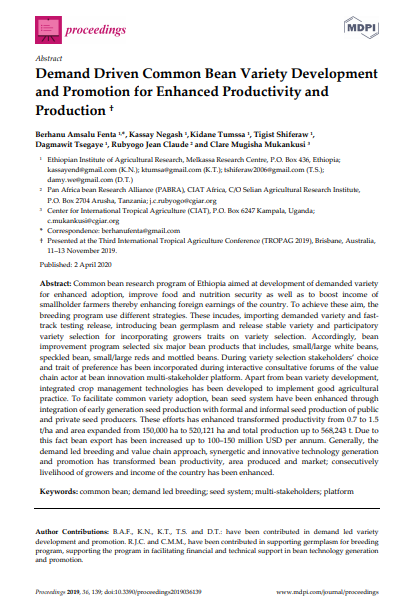Demand driven common bean variety development and promotion for enhanced productivity and production
Summary
This study provides an overview of Ethiopia’s common bean research program, which aims to develop in-demand bean varieties for enhanced adoption, improve food and nutrition security, and generate higher incomes for smallholder farmers. To achieve this, the breeding program uses different strategies. These include importing in-demand varieties and fast-tracking their testing release, introducing bean germplasm, releasing stable varieties, and using participatory variety selection to incorporate growers’ preferred traits. The bean improvement program selected six major bean products: small/large white beans, speckled bean, small/large reds, and mottled beans. During variety selection, stakeholders’ choices and traits of preference were incorporated through interactive consultative forums involving value chain actors on a bean innovation multi-stakeholder platform. In addition to bean variety development, integrated crop management technologies have been developed to implement good agricultural practices. To facilitate common bean variety adoption, bean seed systems have been enhanced through the integration of early generation seed production, involving formal and informal seed production with public and private seed producers. These efforts have enhanced productivity from 0.7 to 1.5 t/ha, bean cultivated area has expanded from 150,000 ha to 520,121 ha, and total production has reached 568,243 t. As a result, bean exports have increased by up to USD 100–150 million per annum. Generally, this demand-led breeding and value chain approach, its synergetic and innovative technology generation, and promotion of improved beans have transformed bean productivity, the area of production, and the bean market. Consequently, the livelihoods of growers and the income of the country has been enhanced.
Open resource Download resource Access resource on external site

